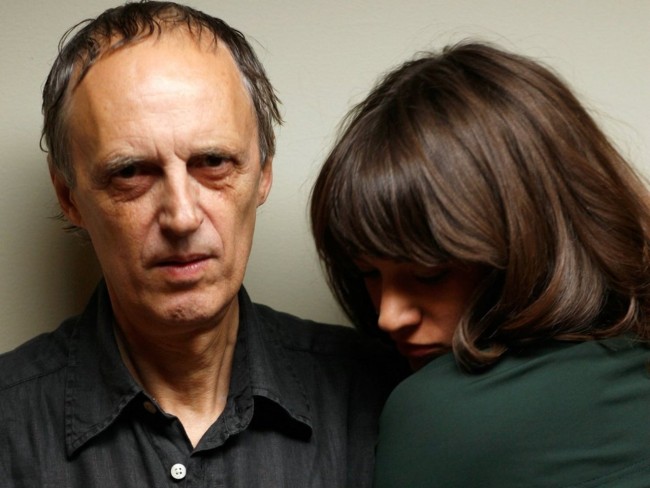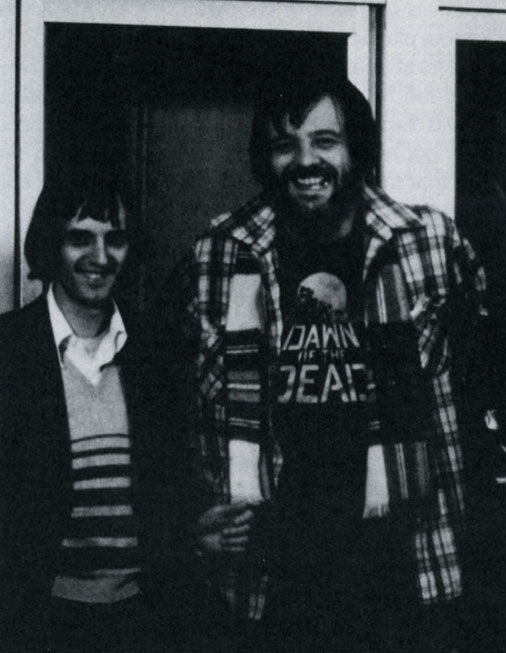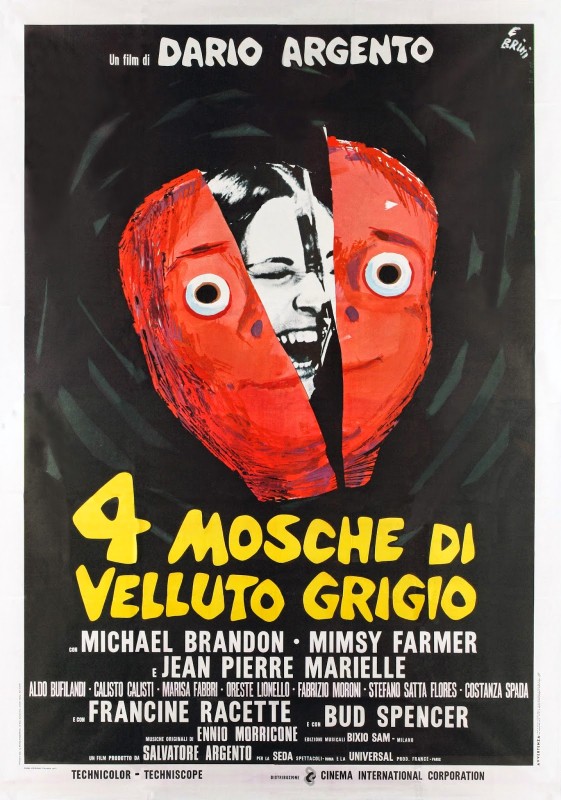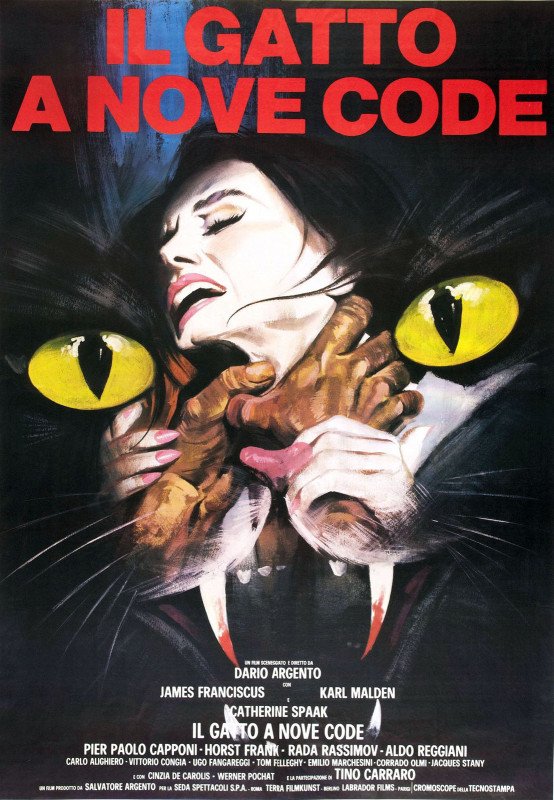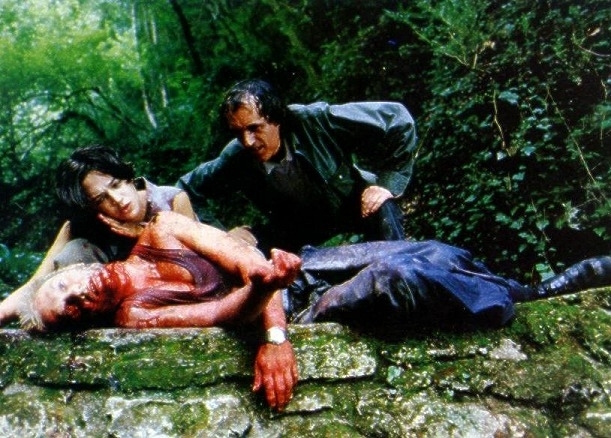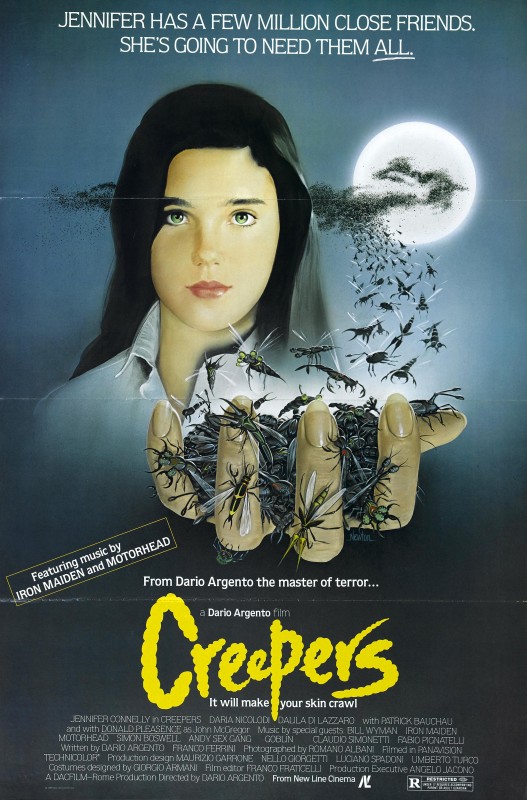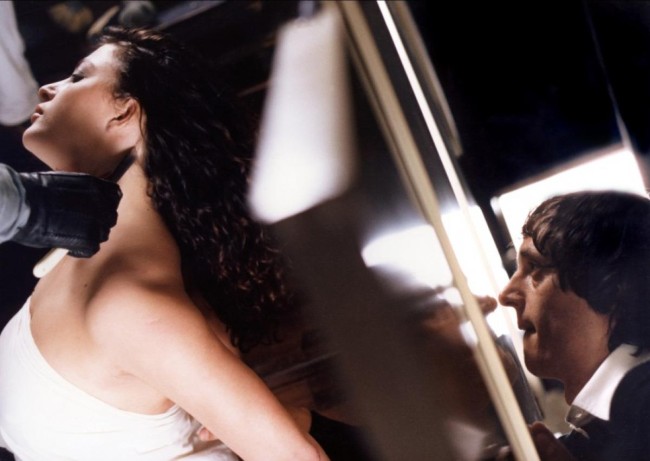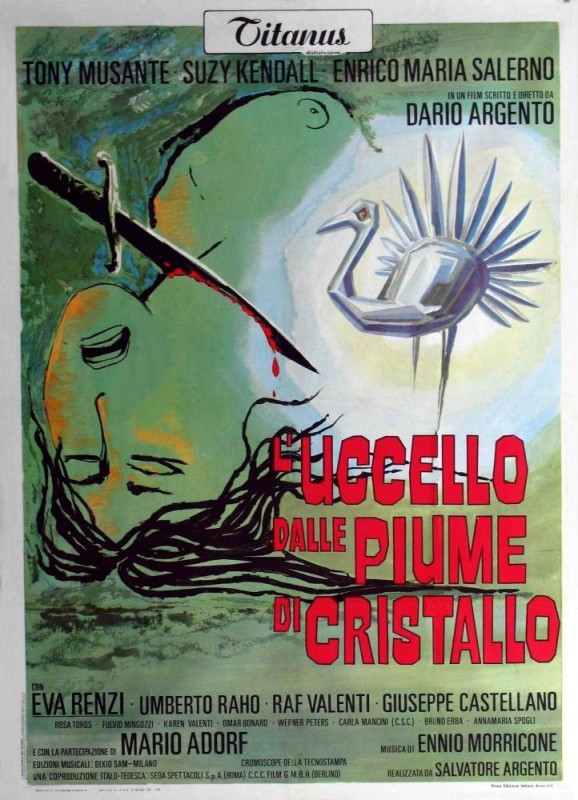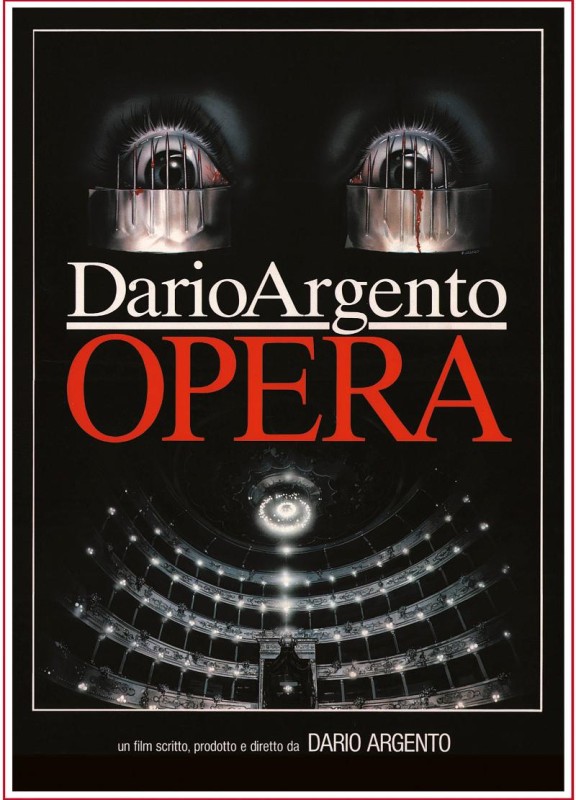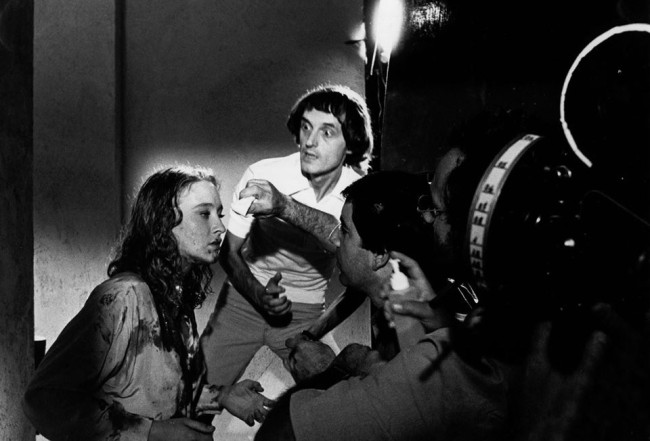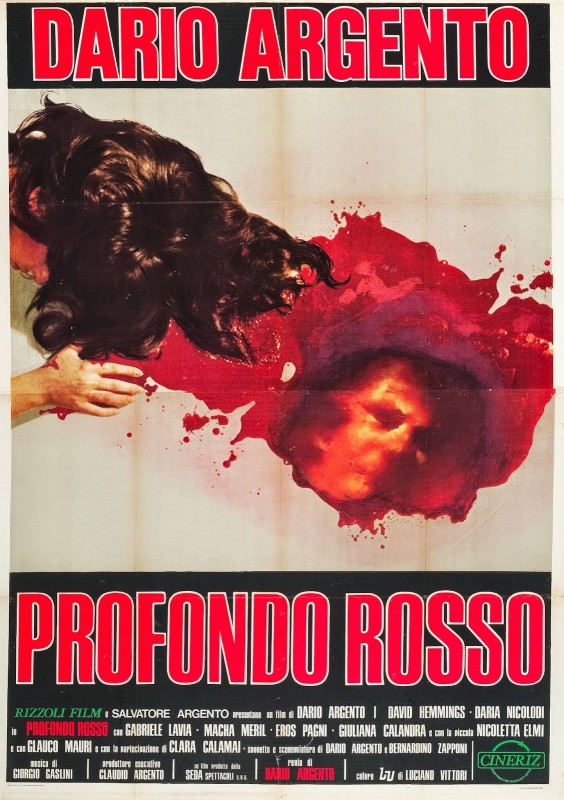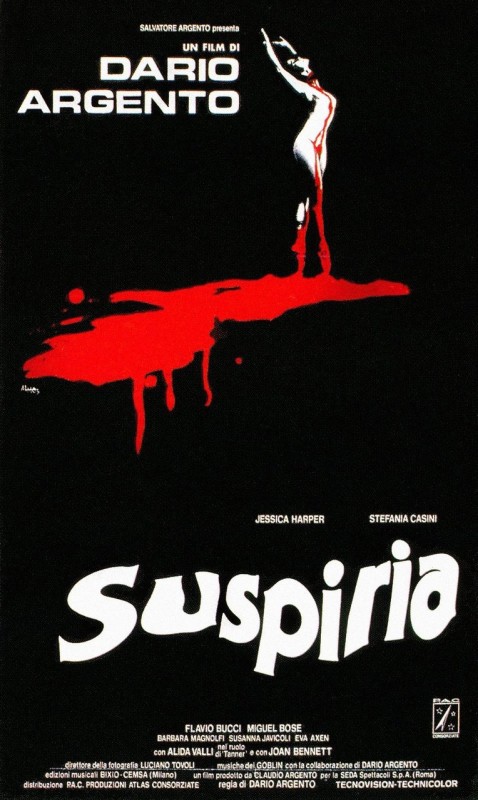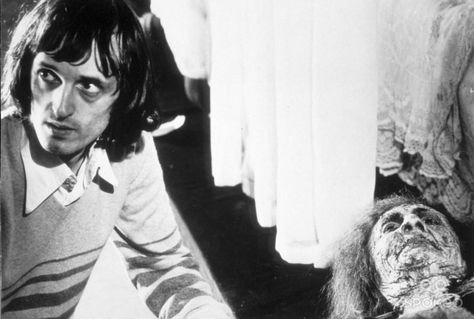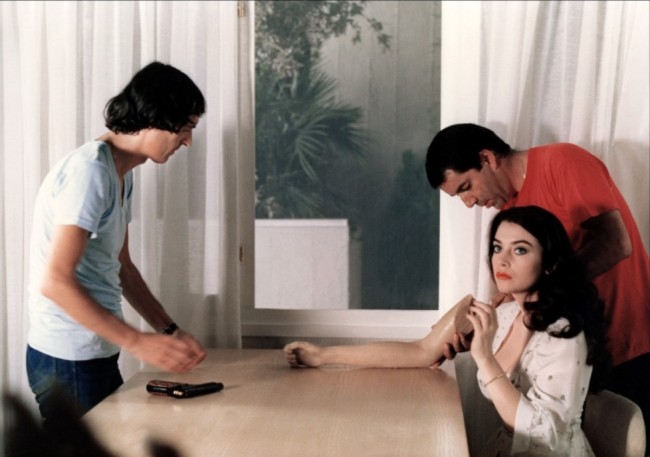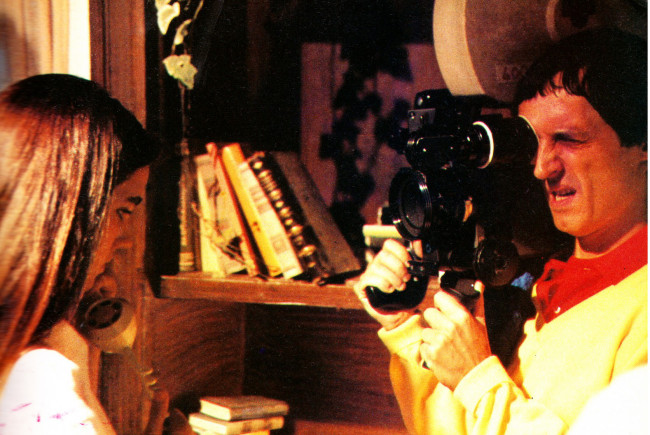By James Hancock October 28th, 2015
I’m not entirely sure what triggered this new obsession of mine but a few months ago I decided to fill in some of the holes in my game when it came to my knowledge of Italian genre films. I started with Mario Bava and before I knew what was happening I was also aggressively hunting down the films of Sergio Corbucci & Lucio Fulci. The journey has been an epic cinematic archaeological treasure hunt from start to finish, but all along there was a strong magnetic force pulling me toward Dario Argento. I knew that this journey through Italian genre films would not be complete without reckoning with his unique brand of horror. I first encountered his work at an incredible screening at the American Cinematheque in Los Angeles back in the late Nineties when they were still hosting screenings at Raleigh Studios during the restoration of the Egyptian Theatre. The film they played was the awe-inspiring Suspiria, the most stylistically original horror movie I had ever seen at that time. But for reasons I can’t explain, even though I consider myself a rabid horror fan, I did not return to explore more of Argento’s work for many years. Well I recently made up for lost time and saw the majority of his filmography ranging from the early 1970s to the present day. It has been an incredible ride. With Halloween only a few days away I feel I owe it to people unfamiliar with his work to share some of my favorite films from his extraordinary career.
Dario Argento grew up in the Italian film industry, the son of producer Salvatore Argento, and to this day Argento’s loyalty to his filmmaking family can’t be understated. Argento’s father produced Dario’s films for many years and eventually Dario’s younger brother Claudio came on board as a producer as well. Nearly all of the women in Dario’s life eventually ended up in front of his camera. Dario has directed his eldest daughter Fiore Argento several times and starting with the film Deep Red (1975) Dario began working with his longtime lover Daria Nicolodi, an actress that Argento seemed to delight in killing on screen repeatedly. But the most famous member of Dario’s filmmaking clan is without question his daughter, Asia Argento. The daughter of Dario and Daria, Asia is a fearless actress who for last twenty years has played an important role as her father’s muse, one who is happy to participate in whatever horrific scenarios Dario cooks up with his imagination. But before becoming a horror icon, Dario Argento was simply a young film enthusiast in the 1960s who chose to take a job as a film critic rather than go to college. By some incredibly fortuitous stroke of luck, his essays and reviews led to his being hired to work as a screenwriter alongside Bernardo Bertolucci on what is arguably Sergio Leone’s masterpiece, ‘Once Upon a Time in the West’ (1968). Argento’s life would never be the same and after a few more films working as a screenwriter, Argento had the confidence to begin his career as a director. A legendary career in horror was officially underway.
Dario Argento made a name for himself initially directing Giallo, a type of murder mystery that takes its name from the lurid paperback thrillers that Italian readers consumed voraciously at the time. He soon transitioned into the horror genre (a subtle distinction but there is one nonetheless) and for the last 45 years Argento has worked almost exclusively in the that genre with stories of murder and the supernatural. When not directing, Argento has lent his talents as a writer and producer to other directors like Lamberto Bava (son of the famous Mario Bava) and George A. Romero. It is impossible to discuss Argento’s career without inevitable comparisons to Maria Bava and Lucio Fulci, his most obvious rivals for the title Maestro of the Macabre. Personally I have room in my heart for all three extraordinary filmmakers. What I love about Argento are his insane camera angles, his dreamlike atmosphere and his haunting baroque sensibility. I’m also throughly amused by his almost crippling fear of cats, at least that is how it appears from how he frequently depicts cats in his movies. These days many dismiss Argento’s more recent work and I’m the first to acknowledge that his 21st century movies have been uneven in quality. Dracula 3D (2012) was a major disappointment (apart from some exceptional nudity) but I’ll never give up entirely on Argento. As recent as 2005 & 2006 he produced some exceptional work when he directed two episodes of Masters of Horror, the truly disturbing ‘Jenifer’ and ‘Pelts’, both of which are well worth hunting down. The fact that Argento is still active and hard at work on a new film called Sandman, which he successfully crowdfunded, should be cause of celebration for horror fans everywhere. But getting back to the task at hand, this post is about the films that I find to be his best. Many of these movies could easily swap places and some hardcore fans of Argento’s early Giallo might cry foul at my not ranking more of his early Giallo films higher on the list. I have to admit that I am biased by my love of supernatural horror so I give more weight to Argento’s experiments with those kinds of stories. But enough delaying on my part, here are my top 10 favorite films by Dario Argento.
10. Four Flies on Grey Velvet (1971)
One of Argento’s early Giallo, Ennio Morricone’s score alone makes Four Flies on Grey Velvet well worth watching. There is an unmistakable hippie vibe to this movie with a story about a drummer in a rock band who accidentally kills a man when he finds himself being followed by a mysterious stalker late at night. The plot thickens when the drummer learns that a madman witnessed the killing and now wishes to torment the drummer by making his life a living hell. The drummer essentially squirms like a worm on a hook throughout the movie trying to determine his tormenter’s identity all while his closest friends are being picked off one at a time by the mysterious madman. Filled with elaborate death sequences and a genuinely surprising twist ending, Four Flies on Grey Velvet is an essential early Argento film.
9. The Cat o’ Nine Tails (1971)
Another early Giallo by Argento, The Cat o’ Nine Tails is an interesting murder mystery where a journalist joins forces with a blind man and his young niece to determine the identity of a serial killer. Fans of the movies of Elia Kazan will be delighted to see Kazan regular, Karl Malden, in the role of the blind man, one who is unafraid to use the concealed blade in his walking stick to violently stab anyone who threatens him or his niece. The Cat o’ Nine Tails features an extraordinary score by Ennio Morricone and overall the story is a very effective whodunit. ***spoiler alert*** Best of all is the climax of the film where Argento serves up one of the most exciting death scenes of his career, one involving a dramatic descent down an elevator shaft followed by an abrupt cut to the closing credits.
8. The Stendhal Syndrome (1996)
Regarded by many as Argento’s comeback film, The Stendhal Syndrome is my favorite of the many collaborations between Dario and his daughter Asia. The story follows a detective who is savagely raped by a madman and finds herself slowly losing her mind after successfully revenging herself upon her attacker. I imagine most psychologists and psychoanalysts could keep themselves busy for decades trying to understand the working relationship between Dario and Asia. Not only has Asia frequently appeared nude in her father’s films but in this film she is tortured in a particularly brutal fashion by her rapist. In the documentary An Eye for Horror, Asia laughs about their professional relationship and how she suspects Dario is working out some of his aggression he feels for Asia’s mother through some of the parts Asia plays for him. No matter what people may think, Dario and Asia’s relationship seems to be very happy and healthy and their collaborations on film have worked to the benefit of both of them professionally. In the history of the horror genre this father-daughter duo is easily one of the most fascinating creative teams.
7. Phenomena aka Creepers (1985)
One of the earliest movies starring the lovely Jennifer Connelly, I can’t believe that I somehow overlooked Phenomena aka Creepers at the time of its release. At age 9, I was a little horror fiend that watched just about every horror film on the racks of my local video store and I would have been the perfect audience for this lurid horror film about a young girl blessed with the power to communicate with insects. When girls start turning up dead at her boarding school, Connelly’s character is wrongfully suspected as the killer leading to her teaming up with a scientist played by the legendary Donald Pleasance to understand how she can put her abilities to better use finding the true culprit. Phenomena has one scene that might be the one genuinely sad moment in all of Argento’s work. Donald Pleasence’s assistant and only friend is a monkey who discovers Pleasence’s body after he has been murdered. Luckily the monkey ***spoiler alert*** gets a chance for revenge wielding a wicked straight edge later in the movie. The soundtrack, which is always a feature attraction in Argento’s work, is particularly good with music by Goblin, Motorhead and Iron Maiden. The epic finale contains some of the most revolting imagery of Argento’s career, specifically Jennifer Connelly’s nearly drowning in a vat of maggots. For people like myself who love Eighties horror and prefer for horror films to take place in the realms of fantasy and the supernatural, Phenomena is required viewing.
6. Tenebre aka Tenebrae (1982)
Tenebre might be the most shockingly violent movie of Dario Argento’s career and furthermore explores to what degree violent individuals are inspired by the media they avidly consume. The story of Tenebre is about a successful author of bestselling murder mysteries who is being stalked by a psychotic fan who enjoys teasing the author with the knowledge that his violent acts are inspired by reading the author’s books. Apparently Argento got the idea from a deranged fan who was obsessed with his movies. Tenebre has an extraordinary cast of beautiful, voluptuous women nearly all of whom unfortunately suffer miserably at the hands of the killer, most notably in a scene involving the amputation of an arm that had me screaming in alarm. I don’t 100% buy the twist at the end of the film, but enough of the film works for me to rank it highly in Argento’s filmography.
5. The Bird with the Crystal Plumage (1970)
Fans of Quentin Tarantino’s Death Proof (2007) will immediately recognize some of the score from Dario Argento’s feature film debut, The Bird with the Crystal Plumage. Tarantino justifiably admires this film, one that shows all the promise of a great career to come. The story follows an American living in Italy suffering from writer’s block. But when he witnesses an attempted murder while trapped on the other side of a glass wall, he finds his imagination and curiosity reignited as he hurls himself into solving the mystery of the assailant’s identity. I found this film to be arguably Argento’s most overtly erotic film, a key ingredient to many Giallo. Even better, this movie has the first of several scores for Argento’s movies by one of the greatest composers who has ever lived, Ennio Morricone. Fans of murder mysteries will be delighted by the twists and turns of the narrative and of all the films I saw on this list for the first time, this is the one I am most likely to return to immediately for second helpings.
4. Opera (1987)
The technical wizardry and the incredible camera moves on display in Opera make this film really stand out, but the horrific story is what grabs me personally. A young singer performing in Giuseppe Verdi’s Macbeth attracts the attention of a total deranged psychopath who comes up with an extraordinarily elaborate technique for expressing his obsession. Repeatedly he assaults her, immobilizes her and tapes needles to her eyelids forcing her to keep her eyes open and watch whatever atrocities he wishes to present to her. To her horror, she has to watch a series of murders or risk putting out her own eyes. Thought of by many Argento fans to be his last truly great movie, Opera sadly underperformed commercially. Opera marks the beginning of a period where the quality of Argento’s films became less consistent effectively ending a hot streak he had sustained since 1975. Be that as it may, Opera is a neglected gem of a horror movie and very deserving of rediscovery.
3. Inferno (1980)
The second in Argento’s Three Mothers trilogy, Inferno is another highly stylized supernatural horror film in the spirit of the movie I regard as Argento’s masterpiece, Suspiria (1977). Some of Argento’s more vocal critics over the years have accused him of misogyny and I imagine many of them came to that conclusion after seeing this movie. While I don’t share that view, the fact remains that this movie serves up several female protagonists in a row who suffer incredibly elaborate and grisly deaths when they try and learn more about an ancient tome filled with information about the Three Mothers. Along with Argento’s signature hallucinatory lighting and production design, Inferno has a score that sounds like Giuseppe Verdi’s ‘Nabucco’ on acid, having been sped up with a 5/4 time signature and then synthesized electronically. Even more alarming than the violence that awaits the female characters of the story is a scene involving a bagful of cats. I’m not sure what cats might have done to poor Dario Argento at some point in his life, but his aversion to them reaches new heights in one of the most disturbing scenes of his career. I’ll admit that Inferno has its fair share of flaws but the movie has everything I love about Argento’s over-the-top style of storytelling.
2. Deep Red aka Profondo Rosso (1975)
Deep Red stars David Hemmings (Blow-Up) as a music teacher who witnesses a murder and decides to risk being murdered himself by pursuing the identity of the killer. As a plot-driven murder mystery, this is one of the best I’ve seen and has the added bonus of some incredibly imaginative and vicious death sequences. Deep Red marks the first collaboration between Argento with the band Goblin who worked repeatedly with Argento throughout his career, perhaps most famously when they wrote the score forDawn of the Dead (1978) which Argento produced alongside George A. Romero. Many Argento fans regard Deep Red as the best film Argento ever made, the crown jewel of the entire Giallo genre. Whatever Argento’s best film might be is open to debate. But what is not open to debate is how Deep Red signals the beginning of the full flowering of Argento’s signature style of filmmaking, a style that would make him an icon of the horror genre in the years to come.
1. Suspiria (1977)
Dario Argento’s hardcore fans might disagree on which of his films is the best, but there is no doubt in my mind that for the uninitiated viewer Argento’s Suspiria is the best gateway into his world. The first of Argento’s supernatural Three Mothers trilogy, the story follows a young ballerina played by Jessica Harper who enrolls in an academy that turns out to be an elaborate front for a coven of witches. From the hallucinatory color scheme and lighting, the otherworldy music, to the utter savagery of the story, Suspiria easily holds it own alongside the greatest horror films ever made. For the second time, Argento worked with the band Goblin for the score and wisely had it composed prior to shooting the film giving Argento the opportunity to play the eerie music full blast on the set. You can see the impact the music had on the actors from their frantic, almost unhinged, performances. Stylistically, no other film by Argento even comes close to what he accomplishes with this film. The academy in which the story place is a fascinating backdrop for the story, an enormous chamber of horrors with a seemingly endless series of secret hallways and ghastly traps at the heart of which is one of the nastiest witches ever caught on film. I can’t say enough about this extraordinary movie and I give it my highest possible recommendation.
* * *
That’s all I have for now. I hope you have enjoyed this list and as always if I left out anything major or made a decision that you completely disagree with, I’d love to hear from you on Twitter. Suspiria is the only film by Argento that I have seen more than once so I am still in the process of digesting many of these films. I have thoroughly enjoyed my movie watching rampage through the filmography of Argento, an experience that has me very fired up for Halloween this weekend. If the movies on this list inspire you in any way to have a more mischievous, sinful weekend while celebrating my favorite holiday then my mission here has been a total success.
I am one of the Co-Hosts of Wrong Reel and you can find more of our content here:
Join the Conversation on Twitter

